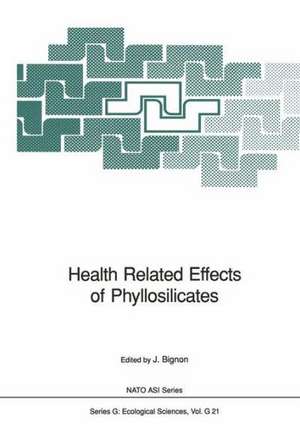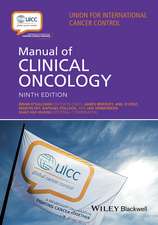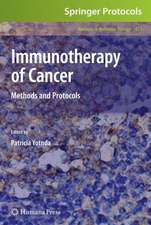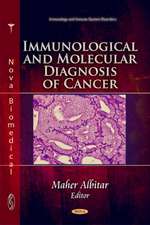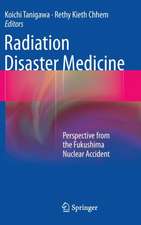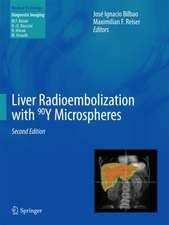Health Related Effects of Phyllosilicates: Nato ASI Subseries G:, cartea 21
Editat de Jean Bignonen Limba Engleză Paperback – 23 dec 2011
Din seria Nato ASI Subseries G:
- 15%
 Preț: 662.62 lei
Preț: 662.62 lei - 18%
 Preț: 979.22 lei
Preț: 979.22 lei - 18%
 Preț: 956.50 lei
Preț: 956.50 lei - 15%
 Preț: 657.08 lei
Preț: 657.08 lei - 18%
 Preț: 949.10 lei
Preț: 949.10 lei - 18%
 Preț: 1235.25 lei
Preț: 1235.25 lei - 18%
 Preț: 967.40 lei
Preț: 967.40 lei - 15%
 Preț: 663.93 lei
Preț: 663.93 lei - 18%
 Preț: 957.44 lei
Preț: 957.44 lei - 15%
 Preț: 642.51 lei
Preț: 642.51 lei - 18%
 Preț: 950.96 lei
Preț: 950.96 lei - 5%
 Preț: 710.60 lei
Preț: 710.60 lei - 18%
 Preț: 979.08 lei
Preț: 979.08 lei - 15%
 Preț: 650.69 lei
Preț: 650.69 lei - 18%
 Preț: 966.27 lei
Preț: 966.27 lei - 18%
 Preț: 958.56 lei
Preț: 958.56 lei - 18%
 Preț: 958.56 lei
Preț: 958.56 lei - 18%
 Preț: 962.49 lei
Preț: 962.49 lei - 15%
 Preț: 650.19 lei
Preț: 650.19 lei - 15%
 Preț: 653.33 lei
Preț: 653.33 lei - 18%
 Preț: 960.78 lei
Preț: 960.78 lei - 15%
 Preț: 657.57 lei
Preț: 657.57 lei - 18%
 Preț: 959.50 lei
Preț: 959.50 lei - 15%
 Preț: 640.06 lei
Preț: 640.06 lei - 18%
 Preț: 959.19 lei
Preț: 959.19 lei - 18%
 Preț: 958.38 lei
Preț: 958.38 lei - 15%
 Preț: 647.40 lei
Preț: 647.40 lei - 15%
 Preț: 649.71 lei
Preț: 649.71 lei - 18%
 Preț: 950.03 lei
Preț: 950.03 lei - 15%
 Preț: 655.13 lei
Preț: 655.13 lei - 18%
 Preț: 950.96 lei
Preț: 950.96 lei -
 Preț: 391.02 lei
Preț: 391.02 lei - 5%
 Preț: 1650.15 lei
Preț: 1650.15 lei - 15%
 Preț: 641.03 lei
Preț: 641.03 lei - 18%
 Preț: 1228.96 lei
Preț: 1228.96 lei - 15%
 Preț: 652.49 lei
Preț: 652.49 lei - 15%
 Preț: 670.17 lei
Preț: 670.17 lei - 18%
 Preț: 955.88 lei
Preț: 955.88 lei - 15%
 Preț: 647.59 lei
Preț: 647.59 lei - 18%
 Preț: 957.13 lei
Preț: 957.13 lei
Preț: 1107.06 lei
Preț vechi: 1165.32 lei
-5% Nou
Puncte Express: 1661
Preț estimativ în valută:
211.83€ • 221.19$ • 174.92£
211.83€ • 221.19$ • 174.92£
Carte tipărită la comandă
Livrare economică 15-29 aprilie
Preluare comenzi: 021 569.72.76
Specificații
ISBN-13: 9783642751264
ISBN-10: 3642751261
Pagini: 464
Ilustrații: XII, 449 p.
Dimensiuni: 170 x 242 x 24 mm
Greutate: 0.74 kg
Ediția:Softcover reprint of the original 1st ed. 1990
Editura: Springer Berlin, Heidelberg
Colecția Springer
Seria Nato ASI Subseries G:
Locul publicării:Berlin, Heidelberg, Germany
ISBN-10: 3642751261
Pagini: 464
Ilustrații: XII, 449 p.
Dimensiuni: 170 x 242 x 24 mm
Greutate: 0.74 kg
Ediția:Softcover reprint of the original 1st ed. 1990
Editura: Springer Berlin, Heidelberg
Colecția Springer
Seria Nato ASI Subseries G:
Locul publicării:Berlin, Heidelberg, Germany
Public țintă
ResearchCuprins
I — Physico-Chemistry of Non Fibrous Phyllosilicates.- 1. The mineralogy of phyllosilicates.- 2. Geological occurrence of phyllosilicates. Application to kaolinite, talc, sepiolite and palygorskite deposits.- 3. Phyllosilicates as industrial minerals.- 4. Surface properties of phyllosilicates.- 5. Phyllosilicates: associated fibrous minerals.- 6 Concentrations of fibres in phyllosilicates.- 7. Talc. A morphological study on pseudomorphs.- 8 The physical characterization of muscovite and kaolinite dusts.- 9 Asbestos content of talcs from italian mines and fibre concentration in various commercial talcum powders used in Italy.- 10. Occurrence of Phyllosilicates in tobacco.- 11. The effect of the surface quality on the fibrogenicity of the phyllosilicates muscovite and kaolinite.- 12. Oxidizing surface properties of divalent iron-rich phyllosilicates in relation to their toxicity by oxidative stress mechanism.- 13. Solubility and surface properties of talc in a physiological fluid. Results of in vitro experiments at 37°C.- 14. Mineralogy of talc deposits.- II — Clinical and Epidemiological Evidence of Health Effects after Occupational Exposure.- 1. Respiratory disease from occupational exposure to non-fibrous phyllosilicates.- 2. Pathological features of pulmonary disease due to silicate dust inhalation.- 3. Clinical aspects of kaolin pneumoconiosis.- 4. French talc pneumoconiosis.- 5. Talc pneumoconiosis in Italy.- 6. Human pathology of kaolin and mica pneumoconioses.- 7. Palabora vermiculite.- III — Health Related Effects after Non Occupational Exposure.- 1. Talc: its cosmetic, addictive and therapeutic uses and their effects on health.- 2. Therapeutic and domestic uses of attapulgite and sepiolite.- 3. Lung retained minerals correlated with smoking, emphysema andlung cancer.- 4. Mineral particulate in the lung parenchyma of subjects not occupationally exposed to dust.- IV — Fibrogenesis — Carcinogenesis. Animal and Cell Responses to Phyllosilicates.- 1 Hypotheses on the mechanisms of carcinogenesis and cell transformation by asbestos and other mineral dusts.- 2. Review on pulmonary effects of phyllosilicates after inhalation.- 3. Intraperitoneal injection studies for the evaluation of the carcinogenicity of fibrous phyllosilicates.- 4. Review of short-term tests used for the toxicological evaluation of phyllosilicates.- 5 Toxicity of phlogopite and muscovite in vitro.- 6. Kaolin generates °OH and causes hemolysis by acting as a Fenton reagent.- 7. Some in vitro and in vitro studies carried out with talc samples.- 8. Slate dust toxicity.- 9. Biological effects of mica dust in experimental animals.- 10. Assessment of the fibrogenicity of attapulgite.- 11. Pulmonary toxicity of kaolin in rats exposed by inhalation.- V — Implications in Industrial Hygiene and in Public Health.- 1. The scientific basis for controlling exposures to phyllosilicate dust at the workplace.- 2. Control limit values in different industrialized countries: USA.- 3. Limit values: the European dimension.- 4. Occupational exposure limits for phyllosillicates in the United Kingdon.- 5. Occupational exposure limits in France.- Conclusions.
